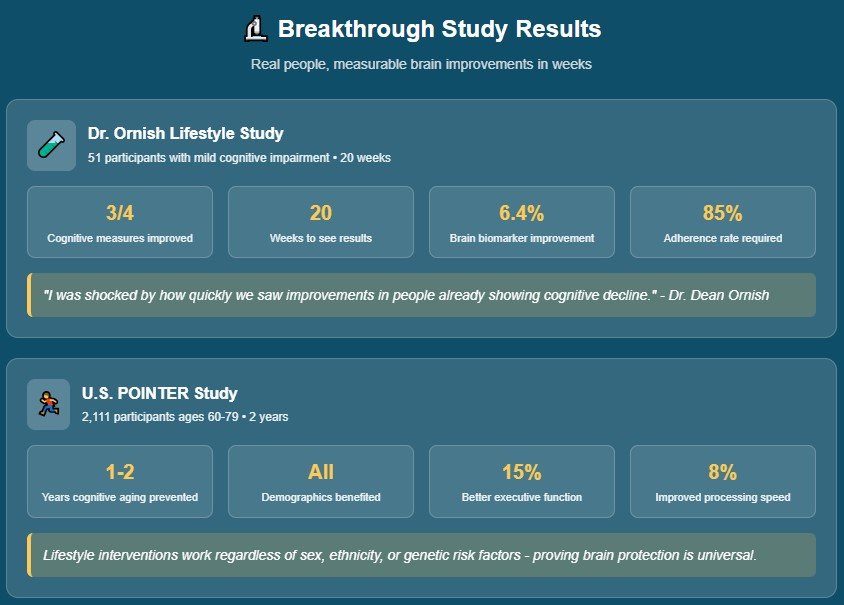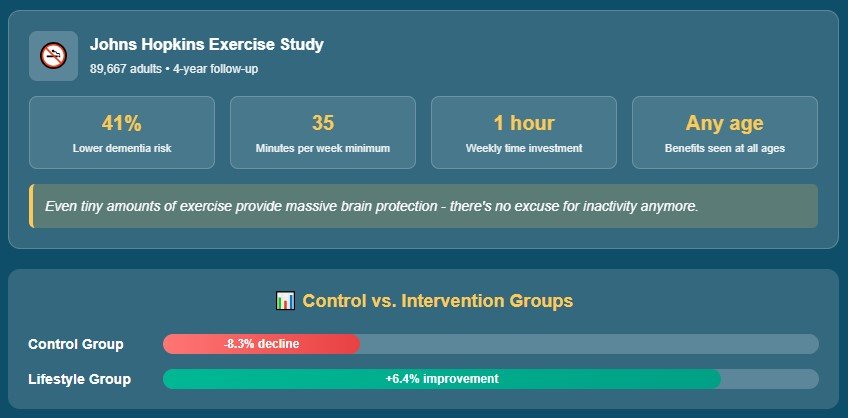
You’re 65, sitting across from your doctor, and they’re telling you that something you do every day has been quietly increasing your chances of developing Alzheimer’s disease by 40%.
The kicker? It’s completely preventable.
I’m talking about cigarette smoking. And before you think “well, everyone knows smoking is bad,” here’s what most people don’t know: the connection between smoking and Alzheimer’s is so strong that researchers now consider it one of the biggest preventable risk factors for dementia.
Let me break this down in a way that might just change how you think about that daily habit.
The Numbers Don’t Lie (And They’re Pretty Shocking)
Here’s what the largest study ever done on this topic found:
Current smokers have a 40% higher risk of developing Alzheimer’s disease compared to people who never smoked.
But here’s the plot twist that gives me hope: Former smokers show no increased risk whatsoever.
Read that again. Zero increased risk.
This is based on a comprehensive analysis of 37 different studies involving over 900,000 people. These aren’t small, fluky studies – this is solid, can’t-argue-with-it science.
Wait, There’s Another Culprit Too

Before we dive deeper into smoking, let me tell you about the other everyday habit that creates the same 40% risk increase: extreme physical inactivity.
I’m not talking about skipping the gym occasionally. I mean the kind of sedentary lifestyle where you barely move at all.
Johns Hopkins researchers found that people who did zero physical activity had a 41% higher dementia risk compared to those who managed just 35 minutes of moderate exercise per week.
That’s it. 35 minutes a week. Less time than it takes to watch your favorite TV show.
What’s Happening in Your Brain?

You might be wondering: How exactly does smoking mess with my brain?
Great question. Let me paint you a mind.
The Smoking Brain Attack
Every time you light up, your brain gets hit with a triple threat:
1. Oxygen Starvation
Smoking damages your blood vessels, including the tiny ones feeding your brain. Less oxygen-rich blood = struggling brain cells.
2. Toxic Protein Buildup
Those chemicals in cigarettes? They help create the sticky protein clumps (called amyloid plaques) that are the hallmark of Alzheimer’s. Think of them as brain rust.
3. Inflammation Gone Wild
Smoking triggers chronic inflammation in your brain. Your brain’s immune cells start attacking healthy brain tissue by mistake.
The Sedentary Brain Drain

When you don’t move enough, your brain loses its ability to grow new connections. It’s like having a garden you never water – things start dying.
Your brain produces less of something called BDNF (brain-derived neurotrophic factor). Think of BDNF as fertilizer for your brain cells. Without it, they struggle to survive and thrive.
The Good News That Might Surprise You
Here’s where this story takes a hopeful turn.
Your brain is incredibly forgiving.
Remember how I mentioned former smokers have zero increased risk? This isn’t just wishful thinking. Research shows that when you quit smoking, your Alzheimer’s risk starts dropping almost immediately.
Within about 9 years of quitting, your risk returns to the same level as someone who never smoked.
Think about that for a second. Nine years might seem long, but if you’re 45 and quit today, by 54 your brain will be as protected as someone who never touched a cigarette.
Real People, Real Results

Let me tell you about a study that blew my mind.
Dr. Dean Ornish (yes, the heart disease guy) took people who already had mild cognitive impairment – basically, people showing early signs of memory problems.

He put them on an intensive lifestyle program, which included a plant-based diet, regular exercise, stress management, and social support.
Within 20 weeks, their cognitive function improved.

These weren’t healthy people trying to prevent problems. These were people already experiencing memory issues who got better by changing their lifestyle.
The Demographics That’ll Make You Think

Here’s something that might hit close to home:
- Nearly 50% of adults over 45 don’t get enough physical activity
- About 15% still smoke
- Women make up 67% of Alzheimer’s cases (and tend to be less physically active)
If you’re a woman reading this, pay extra attention. The combination of higher inactivity rates and genetic factors means lifestyle changes are especially crucial for you.
But I’m Young – Do I Need to Worry?

Short answer: Yes, but in a good way.
Your brain today is setting the stage for your brain at 75. The damage from smoking and inactivity builds up over decades. But so does the protection from healthy habits.
The sweet spot for prevention? Ages 45-65.
This is when your brain is most responsive to positive changes. Start protecting it now, and you’re essentially buying insurance for your future self.
The “How Little Can I Get Away With?” Question
- 7 minutes daily of walking
- One 35-minute weekend hike
- Three 12-minute lunch walks
- Two 17-minute sessions
- Dancing to 9-10 songs
- 30 min walk, 5 days per week
- Three 50-minute sessions
- 21 minutes daily
- Weekend warrior: 75 min x 2
- Mix: stairs, parking farther, etc.
- Day 1: Brain protection begins
- Month 1: Circulation improves
- Year 1: Significant risk reduction
- Year 5: Major protection achieved
- Year 9: Complete risk reversal
I get it. You want to know the minimum effective dose, right?
For smoking: There isn’t one. Every cigarette matters. But here’s the encouraging part – any reduction helps, and complete cessation gives you maximum protection.
For exercise: Remember those 35 minutes a week I mentioned? That’s your bare minimum for brain protection. But honestly, aim for 150 minutes of moderate activity weekly if you can swing it.
Your Brain on Exercise vs. Your Brain on Cigarettes

Let me give you a visual comparison:
The Exercising Brain:
- Grows new blood vessels
- Produces more protective proteins
- Clears out toxic waste efficiently
- Forms new neural connections daily
The Smoking Brain:
- Struggles with reduced blood flow
- Accumulates harmful proteins
- Fights chronic inflammation
- Loses connections over time
Which brain do you want at 70?
The Simple Action Plan That Works

Okay, enough science. Let’s talk about what you can do with this information.
If You Smoke:
Start with this mindset shift: You’re not just quitting smoking – you’re actively preventing Alzheimer’s.
- Pick a quit date within the next month
- Get support (apps, counseling, nicotine replacement)
- Focus on the 9-year timeline – your brain protection starts immediately
If You’re Sedentary:
Start embarrassingly small:
- Week 1: 10-minute walk after dinner
- Week 2: Add a second 10-minute walk
- Week 3: Make one walk for 15 minutes
- Build from there
If You Do Both:
Tackle one at a time. Trying to change everything at once usually backfires. Most experts recommend addressing smoking first, then building the exercise habit.
The Question That Changes Everything

Here’s what I want you to ask yourself:
What would I do differently today if I knew it could cut my Alzheimer’s risk by 40%?
Because now you do know.
You know that the cigarettes aren’t just affecting your lungs – they’re increasing your chances of losing your memories, your independence, your sense of self.
You know that sitting all day isn’t just bad for your waistline – it’s actively shrinking your brain’s ability to protect itself.
The Bottom Line (And Your Next Step)
We’re living through an incredible time in brain research. For the first time in human history, we know exactly how to prevent nearly half of all Alzheimer’s cases.
The science is clear: Smoking and extreme inactivity are brain killers. But they’re also completely within your control.
Your future self – the one at 70 or 80 – is counting on the decisions you make today.
So here’s my challenge to you: Pick one thing. Start today.
If you smoke, research quit-smoking resources in your area. If you’re sedentary, put on your shoes and walk around the block.
Your brain will thank you for it. And more importantly, you’ll thank yourself when you’re still sharp, independent, and fully you decades from now.
What’s the one change you’re going to make this week? Your future memory depends on your answer today.






